Abstract
Medical publications contain numerous references to obstacles or disincentives confronting patients who wish to return to work after illness or injury. Current developments of importance to this aspect of medical practice and four recent studies, conducted in Edinburgh, that may contribute to the continuing debate about how best to deal with such problems are reviewed. The studies concern measurement of rehabilitation status, identification of potential to benefit from rehabilitation, medical contributions to occupational assessment of accident victims, and patients' patterns of involvement with medical and vocational rehabilitation services. It is concluded that coordination between services is still a major problem and is likely to remain so if more effective bridging between medical and vocational aspects of rehabilitation is not achieved.
Full text
PDF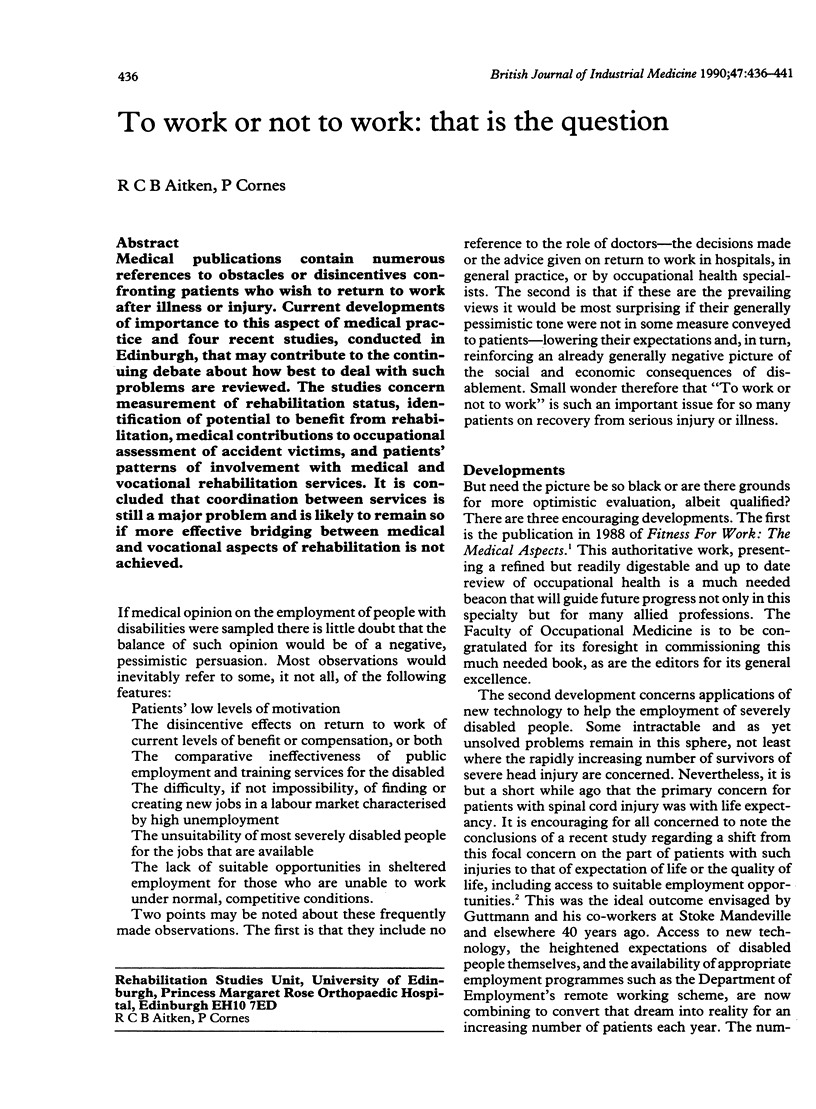
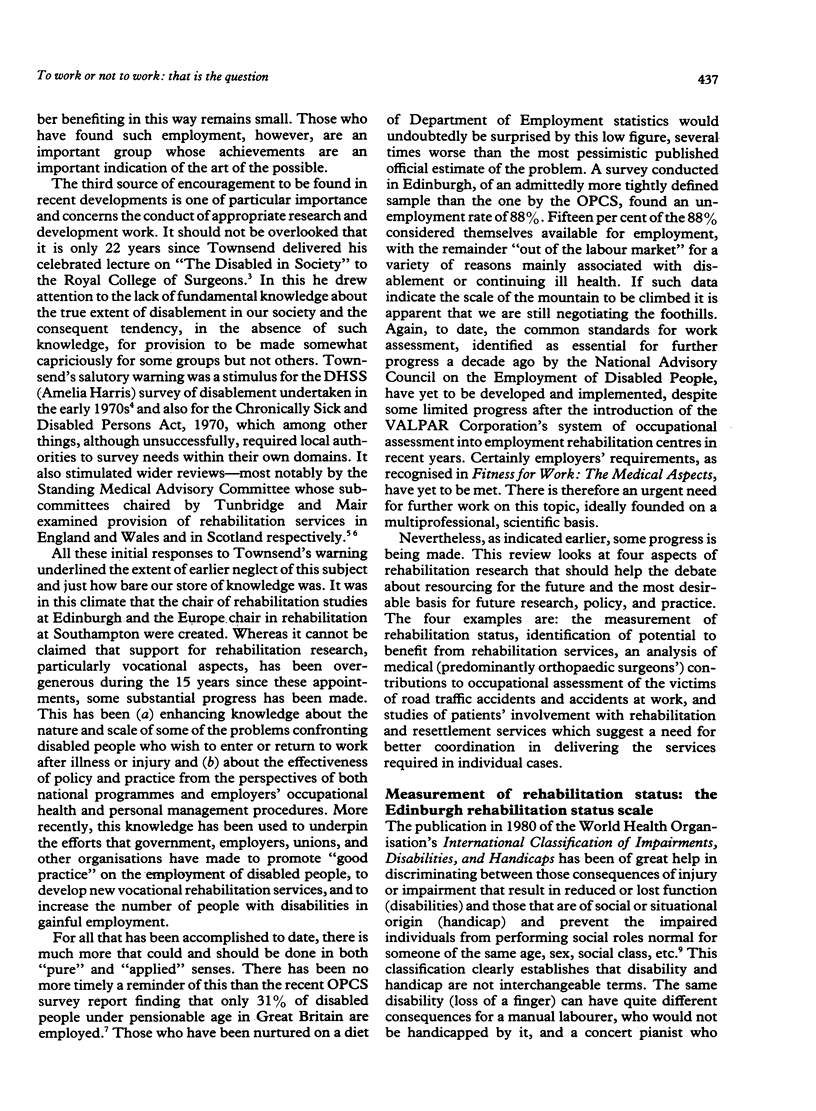
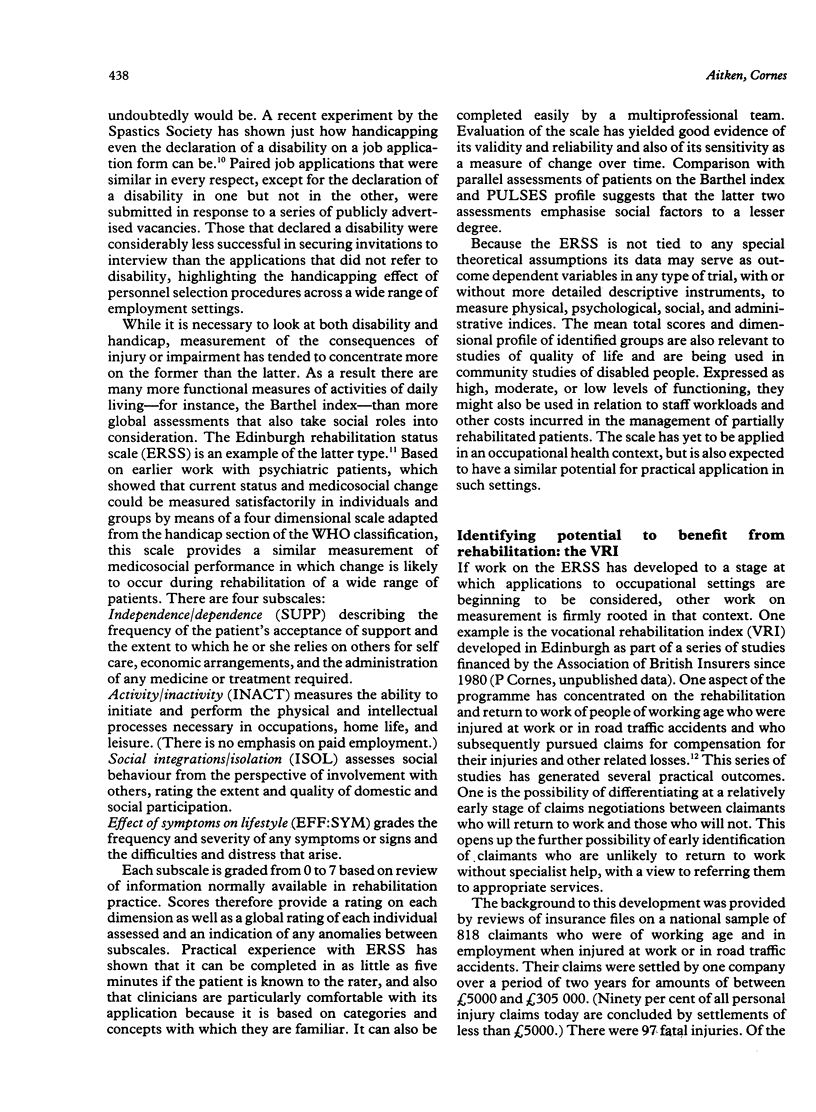
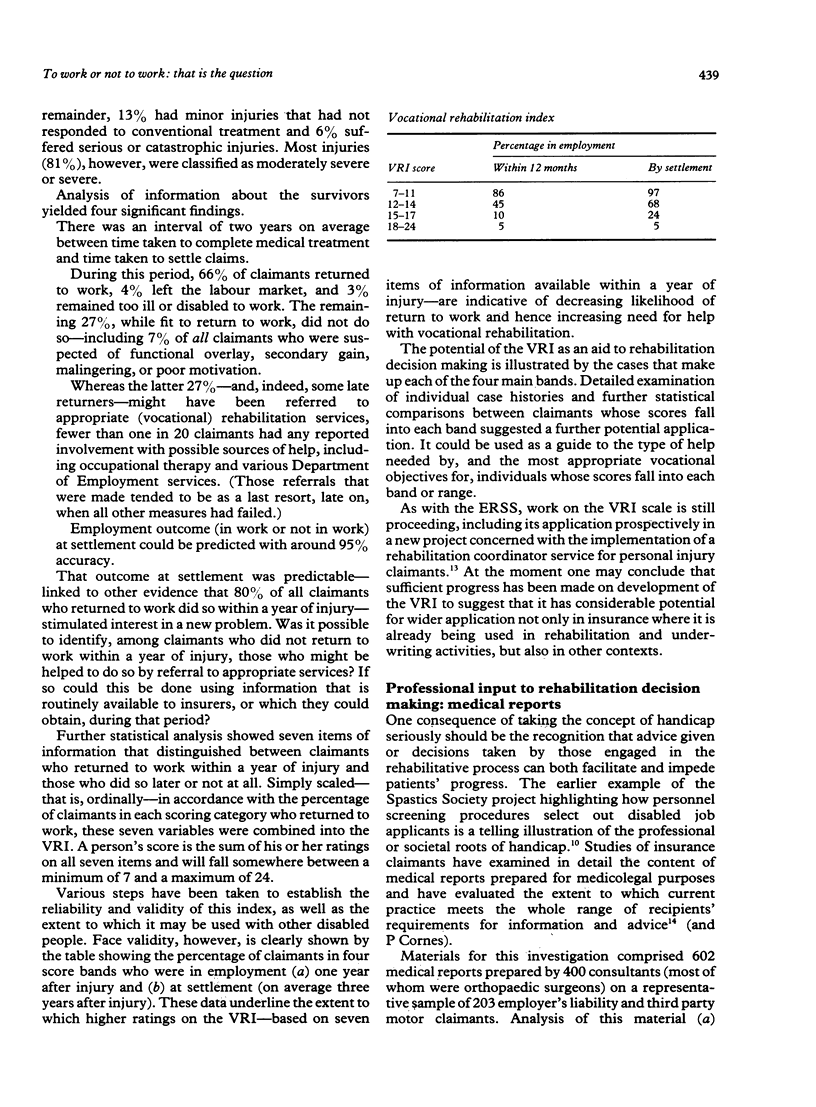
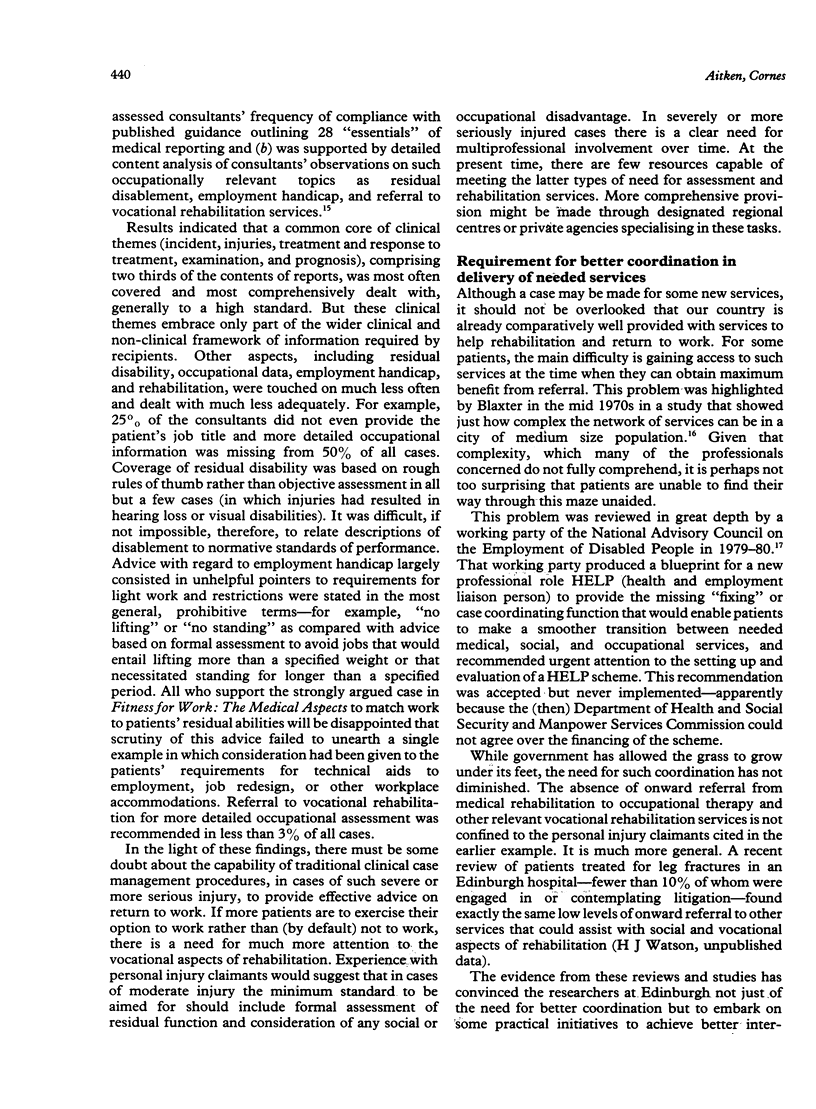
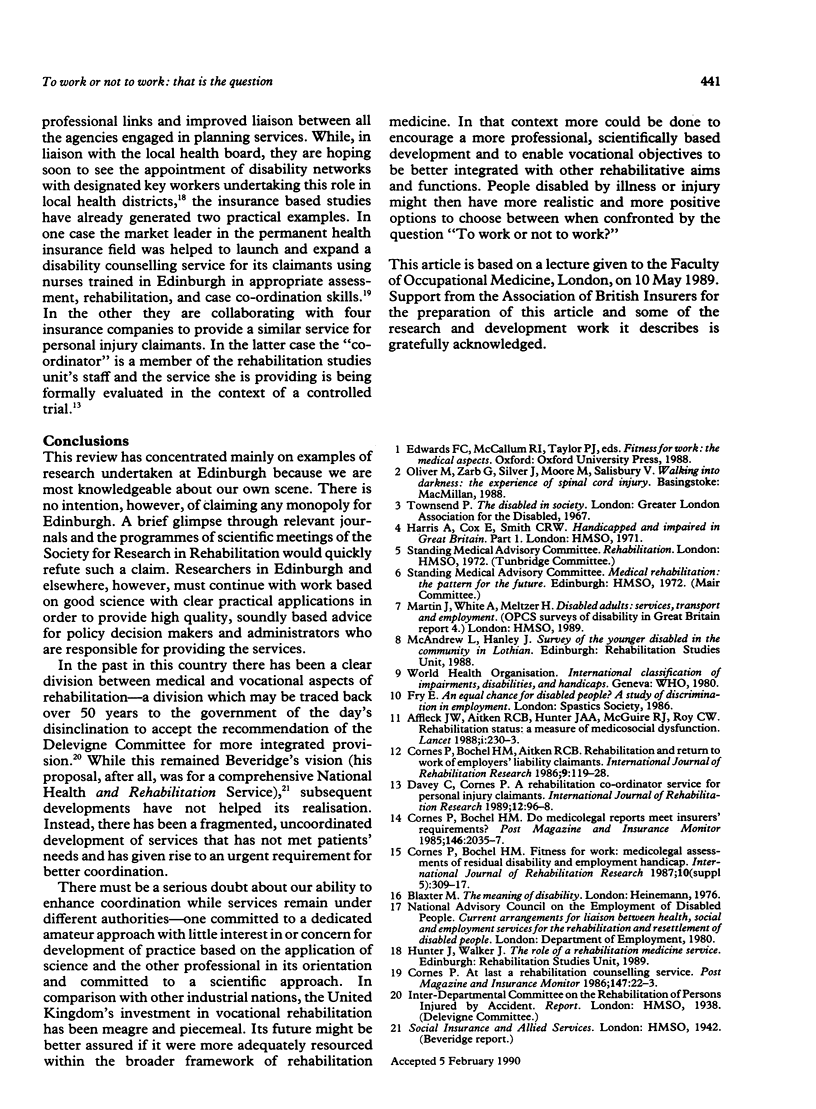
Selected References
These references are in PubMed. This may not be the complete list of references from this article.
- Affleck J. W., Aitken R. C., Hunter J. A., McGuire R. J., Roy C. W. Rehabilitation status: a measure of medicosocial dysfunction. Lancet. 1988 Jan 30;1(8579):230–233. doi: 10.1016/s0140-6736(88)91075-6. [DOI] [PubMed] [Google Scholar]
- Cornes P., Bochel H. M., Aitken R. C. Rehabilitation and return to work of employers' liability claimants. Int J Rehabil Res. 1986;9(2):119–128. doi: 10.1097/00004356-198606000-00002. [DOI] [PubMed] [Google Scholar]
- Cornes P., Bochel H. M. Fitness for work: medicolegal assessment of residual disability and employment handicap. Int J Rehabil Res. 1987;10(4 Suppl 5):309–317. [PubMed] [Google Scholar]


